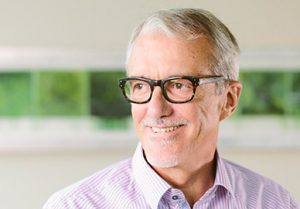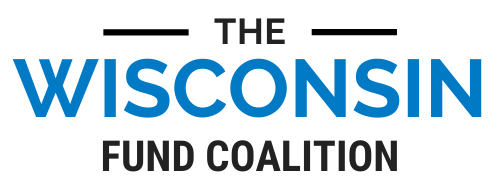27 May Lessons from the field: Real world examples to consider in Wisconsin’s Fund of Funds design
By John Neis
 Venture Investors LLC is Wisconsin’s oldest venture capital firm, formed in 1982. Headquartered in Madison and focused on healthcare opportunities spinning out of research university ecosystems, the firm has watched Wisconsin’s entrepreneurial climate evolve and have been a part of every effort to improve venture capital availability in the state.
Venture Investors LLC is Wisconsin’s oldest venture capital firm, formed in 1982. Headquartered in Madison and focused on healthcare opportunities spinning out of research university ecosystems, the firm has watched Wisconsin’s entrepreneurial climate evolve and have been a part of every effort to improve venture capital availability in the state.
Venture Investors also has an office in Ann Arbor, Mich., attracted by a Fund-of-Funds program in that state, and other states in the region have encouraged them to apply for their programs. As a participant and observer, our fund managers believe there are several important lessons from real examples in considering the design of Wisconsin’s proposed Fund-of-Funds.
- The biggest ideas need big funding: The median-sized venture fund raised last year in the United States was $75 million. The average round of venture capital financing for a company was $14 million, and most companies require multiple rounds of financing to get to an exit event. If you are going to trying to create billion-dollar companies with hundreds or thousands of employees, entrepreneurs need the resources to aggressively pursue their vision. Wisconsin does a good job of raising $1 million to $3 million seed rounds. It may take one or two rounds of $10 million to $30 million before a company attracts coastal attention. Wisconsin has 0.33% of the nation’s venture capital under management and not enough firms capable of scaling to the opportunity.
- Syndication matters: Venture capitalists rarely work alone. They band together with the same goals and complementary expertise to finance a company. Fund managers seek experienced syndicate partners, often working with similar circles of reliable partners. Syndicate partners prefer to have a local lead investor who is keeping a finger on the pulse of company with more routine in person contact. These relationships are built like a social network, growing over time and with experience. When Wisconsin’s fund-of-funds invests in a venture capital fund, it gets the firm’s commitment to serve as the local lead, but it also opens access to their national network. Through a combination of funds that started here and other experienced firms who are willing to open an office here, we have an opportunity to create stronger local leads with a broader network effect.
- The best VCs bring experience, relationships and know how: Venture capital isn’t stock picking. The best VCs are highly focused in an industry sector with experience and knowledge that can help a company succeed though active involvement on the board of directors. The program needs to be big enough to attract enough firms to cover multiple industry sectors at different stages of development who know how to help entrepreneurs achieve their full potential.
Some real-life examples:
TomoTherapy was an idea developed at the UW-Madison for greatly improving the precision of delivery of radiation therapy to cancer patients, improving outcomes and reducing side effects. The founders had one employee and a desktop prototype that demonstrated proof of principal. Radiation therapy was not novel, so the bar for FDA clearance was low, reducing development costs, but the device that used a number of Wisconsin based component suppliers eventually had a $3 million price tag was complex so the development costs for a commercial product was significant. Venture Investors provided a seed financing round of $3 million with one other regional venture capital firm. Overall, the company required $42 million in venture capital before completing an IPO. There was no coastal investor interest until the company received FDA clearance and had delivered a first system, and it took a regional syndicate of six investors who provided $21 million to reach that point. By the time the Venture Investors partner stepped off the board of directors eight years after the initial investment, the company had grown to more than 700 employees with an average salary that was double the Wisconsin average. The company had $220 million in revenue and was selling its systems across the globe. They since merged with a California company, Accuray, which moved all its device manufacturing and assembly operations to Madison. TomoTherapy might have struggled to get off the ground without a local lead investor with considerable capacity and syndication relationships regionally and nationally. Without the local lead, it is more likely that WARF’s only option would have been to license to one of the large global companies who were not in Wisconsin.
NeuWave Medical was a UW-Madison spin-out that wanted to deliver a different form of energy to destroy cancer: microwave. The academic founders approached Venture Investors for $2 million to get to FDA clearance for their novel device. Venture Investors saw the potential in the concept but knew from experience that it would take more than $2 million. Further, they believed the company needed someone with commercial experience. Venture Investors introduced the company to a woman with exceptional leadership experience in medical devices. She joined as chief executive officer and determined that the amount required to get to FDA clearance was $6 million, which was the size of the financing that Venture Investors syndicated locally. They developed and manufactured the device in Wisconsin, sourcing most components from a supply chain of Wisconsin-based companies. After another locally syndicated round that brought the total investment to $15 million, the company eventually needed a total of $57 million in financing, $12.5 million of which came from Venture Investors, and the rest from a national syndicate. They first added a Miami firm. In the next round they added a Silicon Valley firm that had invested with Venture Investors in two companies using lasers as an energy source to perform eye surgeries. After beginning to rapidly grow revenue, NeuWave Medical was acquired by Johnson & Johnson for $300 million. It was the first time Johnson & Johnson had a location in Wisconsin, and they have maintained operations and expanded employment in Madison. Without a local lead investor that found the right CEO and had national syndication relationships, NeuWave Medical would have been underfunded and would have likely been forced to partner with an out-of-state firm early in their development.
Histosonics was a University of Michigan spinout. What if you could perform precise cancer surgery to destroy cancer without an incision? Histosonics needed seed funding to develop their novel idea for delivering another form of focused energy to destroy cancer cells: a unique form of ultrasound. The cost of development was substantial because it was a novel new approach that had a high bar for FDA clearance, and no coastal investors demonstrated any interest.
The Venture Michigan Fund of Funds invested in multiple venture capital funds who agreed to commit to invest in Michigan, a combination of funds that were based in Michigan and out-of-state funds who agreed to open an office in Michigan. One of those funds was Venture Investors, headquartered in Madison, who agreed to open an office and place a partner in Michigan. As described above, Venture Investors had lots of experience with companies using energy to destroy tissue. Venture Investors recognized similar potential in Histosonics but saw that they needed help. They put forward a CEO candidate through their entrepreneur in residence program, syndicated an $11 million Series A financing that included five venture capital funds, four of which received Venture Michigan funding, three of which opened office in the state because of the program. The first $34 million was difficult to raise, all coming from the original syndicate and a few added regional investors. After the sale of NeuWave Medical to Johnson & Johnson, several senior members of the NeuWave team started looking for new opportunities, and Venture Investors helped recruit them to Histosonics. (The NeuWave founders started a new company which Venture Investors backed within a month after the sale.) However, as compelling clinical data led to the belief that this could be the next major modality for treating cancer, suddenly everyone wanted to invest, including strategic investors. Today, Histosonics has raised $122 million from a syndicate that now includes coastal venture capitalists and two corporations, Johnson & Johnson (introduced by Venture Investors) and Varian Medical. They are targeting FDA clearance next year and believe they will become the next “unicorn” (a company worth more than $1 billion) when that happens. Without a Michigan Fund-of-Funds program that included a mix of in-state and out-of-state investors willing to establish an office in Michigan, the seed round probably would have not occurred, and if it did, not from the kinds of investors who had the depth of knowledge and experience to guide them towards success.
Michigan benefited from a Wisconsin headquartered venture capital fund opening an office in Michigan, but so did Wisconsin. Two major suppliers of components for the Histosonics’ system are Wisconsin based, GE Healthcare of Waukesha and MPE of Milwaukee. Additionally, the company has established a research collaboration with the UW-Madison.
Summary of lessons learned and their application to the Wisconsin Fund-of-Funds:
- All these companies needed a local or regional syndicate that could invest between $15 million and $34 million before being able to attract investors from outside the region. To achieve that and compete on a national basis, we need multiple funds in the leading sectors that are at or around the U.S. median size of $75 million.
- They all required a local lead investor with meaningful capacity and syndication experience to put together sufficient financing to advance the company. We should increase the support of our in-state firms and help them gain experience, but also tap into the broader experience of national firms willing to open an office here and get access to their networks.
- Each company benefited from investors who had market knowledge, links to talented people who could join their leadership teams, relationship with investors and strategic partners, and experience with the investment exit process through an Initial Public Offering or acquisition. Companies need more than money, they need guidance. It is better for the state and its entrepreneurs if we can attract that kind of investor talent.
- Histosonics would not have happened if the Michigan Fund-of-Funds had not included a mix of in-state and out-of-state firms. That required couple of key attributes in their design:
- Scale: Michigan rightfully required that out-of-state firms open an office in Michigan with a full time professional. Evidence from multiple states shows that this requirement produces the best results. However, Venture Investors would have not opened an office in Michigan without a commitment of at least $15 million, which would generate annual management fees of $375,000, a bare minimum needed to cover the cost of establishing operations there. If the program is less than $100 million in Wisconsin, it will not be big enough to include some out-of-state firms and back enough funds for a mix of industry and stage focus.
- Limited restrictions: Michigan required Venture Investors to invest a minimum of the amount invested by the Venture Michigan program in Michigan companies. They did not try to impose the same restrictions on the matching money like was done in the Badger Fund-of-Funds program. Venture Investors would not have taken the money if the requirements were imposed on the matching dollars, because those matching investors would have not invested under those circumstances. The matching dollars increase the size of investment that an investor can make in any one company. The multiplier on the state investment is achieved through syndication.
- Venture Investors has repeatedly shown that the benefits of the program to the state go far beyond the return on investments that the funds make in the state:
- NeuWave founders went on to start another company backed by Venture Investors.
- TomoTherapy’s founder has been involved with numerous additional start-ups, including one backed by Venture Investors.
- Venture Investors was the seed investor in Third Wave Technologies, a UW spin-out that went public and was later acquired. Kevin Conroy was recruited to the company and moved to Madison to become CEO. After successfully growing and then selling the company, venture capitalists around the country were trying to recruit him to become CEO of their companies. However, he and his family had fallen in love with Madison and didn’t want to leave. A Boston based venture capital firm agreed to move their company, Exact Sciences, to Madison to get Kevin as CEO. Exact Sciences now has a market value of $18 billion and as of the end of 2020, they had 5,000 employees.
- Gala Design was a UW spin-out that had a novel technology for improving the production output of biological drugs. Venture Investors backed them and led a syndicate that raised $21 million. The technology worked, but they struggled to get traction. However, they did eventually attract one strategic investor, Cardinal Health, who eventually acquired them at a time when they had about 30 employees, resulting in investors getting a little more than their money back. Cardinal Health eventually spun-out the assets into a separate public company, Catalent, which now employs 500 people in Madison and is continuing to grow on the city’s West Side.
The state gets the same return as every other investor in a fund. However, the state gets more. Here are some of the other potential measures of program success:
- Growth in employment and average annual compensation.
- Tax revenue (employment, sales, property, investment income and capital gain).
- Syndication multiplier: total raised in concurrent and subsequent investment rounds.
- Use of a supply chain and service providers in the state that create a material secondary effect on employment growth and state GDP.
- University spinouts and licensing revenue.
- Subsequent companies formed by serial entrepreneurs after their first success.
- Public company presence and employment after acquisition.
Neis is managing partner of Venture Investors LLC, with offices in Madison and Milwaukee. He is a member of the Tech Council board of directors, the Wisconsin Venture Capital Association and the Wisconsin Fund Coalition.



